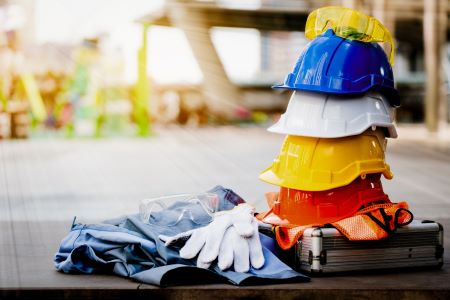 Safety issues in construction should always be top of the mind for construction leaders at general contractors. As safety has moved to the forefront of job sites across the nation in the last few decades, we have seen a considerable increase in positive safety culture and the ability to prevent injury and lost time for our craft professionals.
Safety issues in construction should always be top of the mind for construction leaders at general contractors. As safety has moved to the forefront of job sites across the nation in the last few decades, we have seen a considerable increase in positive safety culture and the ability to prevent injury and lost time for our craft professionals.
But there are still many ways that safety issues in construction can be addressed that go beyond the classroom and get to the main barriers to safety on jobsites.
Consider four ways to address safety issues with your trade partners that will reduce incidents and increase productivity.
How General Contractors Impact the Safety Culture on Job Sites
Require all craft professionals to participate in daily hazard analysis with their crew.
- Encourage all trade partners to work together to plan work and complete job safety analysis.
- Provide for language barriers.
- Create a stop work authority culture that promotes safety as a community effort.
Let’s take a closer look at these recommended actions.
1. Require Craft Professionals to Participate in a Daily Hazard Analysis
We talk about job hazard analysis all the time in classrooms where safety is the primary topic of instruction. When we include our craft professionals in the analysis of hazards while actually on the job site, we increase their ability to identify in real-time things that can go wrong for both themselves and other individuals in their crew.
A daily hazard analysis done by an entire crew also ensures that each individual craft worker is aware:
- Of their responsibilities.
- How they support the project productivity for the day.
- Creates agreement with the goals of the crew.
Accidents are more likely to happen when there is confusion or a lack of understanding of the work to be completed.
2. Encourage Different Trade Partners to Plan Work Together
Job sites are very crowded and oftentimes different trade partners are working side by side without ever speaking to the other.
For example, the hazards identified by an electrician will always be different from the hazards identified by a drywall installer. They work in different spaces and have different frames of reference, yet their work often overlaps. When GCs allow trade partners to work in isolation, they increase the possibility that:
- Hazards we'll go unidentified.
- Miscommunication will happen.
- Incidents will have a higher probability of occurring.
Even if pulling together all the trade partners can be time-consuming and may seem difficult, the outcome can increase safety and productivity by allowing trade partners to collaborate to create efficiency in small workspaces.
3. Provide for Language Barriers
When Construction Career Collaborative (C3) offers English for construction workers, we hear from craft professionals who are not native English speakers that they feel safer and more knowledgeable as they increase their English proficiency.
While this feedback seems incredibly obvious, we oftentimes fail to provide second language speaking craftworkers with tools to encourage them to be more prepared and better able to communicate safety concerns to English-speaking supervisors.
It is imperative that we empower our workforce through inclusive training programs that include language skills if we genuinely want to see a decrease in safety issues on construction sites and an increase in our safety cultures.
Beyond English for construction workers, Spanish for construction supervisors is equally valuable for:
- Increased safety awareness.
- Increased productivity.
- Better quality work.
- Increased retention of craft professionals
4. Create a Stop Work Authority Culture that Promotes Safety as a Community Effort
According to books published by the Center for Chemical Process Safety (CCPS), stop work authority is empowering everyone on the team to fulfill their safety responsibilities. As a general contractor, you manage many teams that must play together and create safety equally across the jobsite. CCPS has shared this important lesson to keep in mind:
“Leaders should make it clear that any employee can stop work or shut down the job if they perceive a potentially unsafe situation. Employees who exercise stop work authority should be complimented, not criticized. When stop work authority is used, leaders should avoid second-guessing the decision. Instead, understand the reason for the decision to stop work and address the root cause.”
When we support our workforce and trust them to behave in the best interest of the job and the team, we create a true safety culture.
Learn More About Safety Issues in Construction
Looking for more tips to step up your safety culture? Sign up for the C3 News Brief. To be added to our list, simply drop your email address in the sign-up box on our Contact page.
In our email newsletter, we share valuable information about safety issues in construction and other topics you will find valuable to advance safety in your company.


